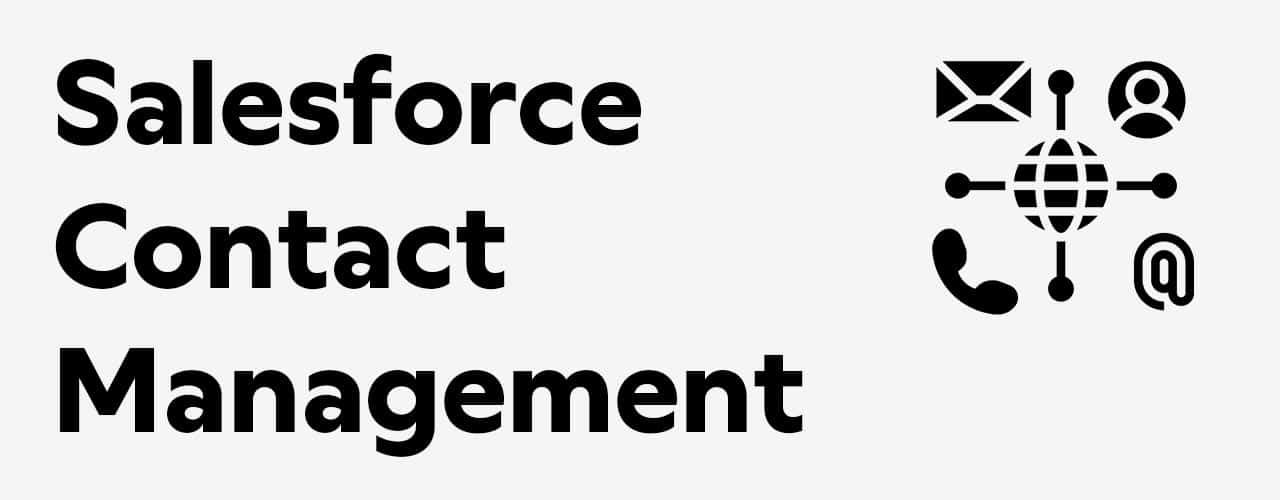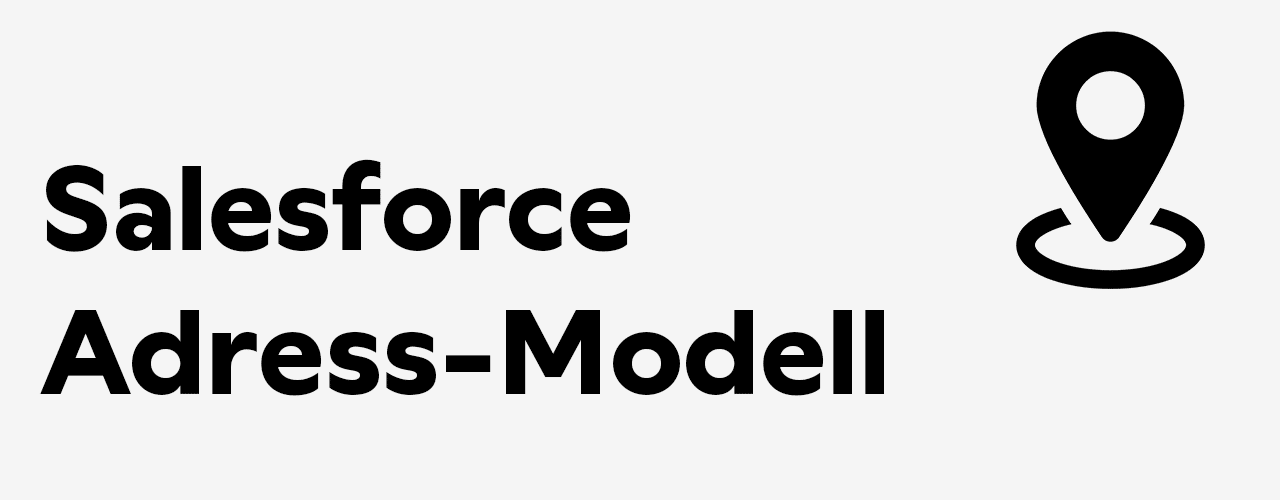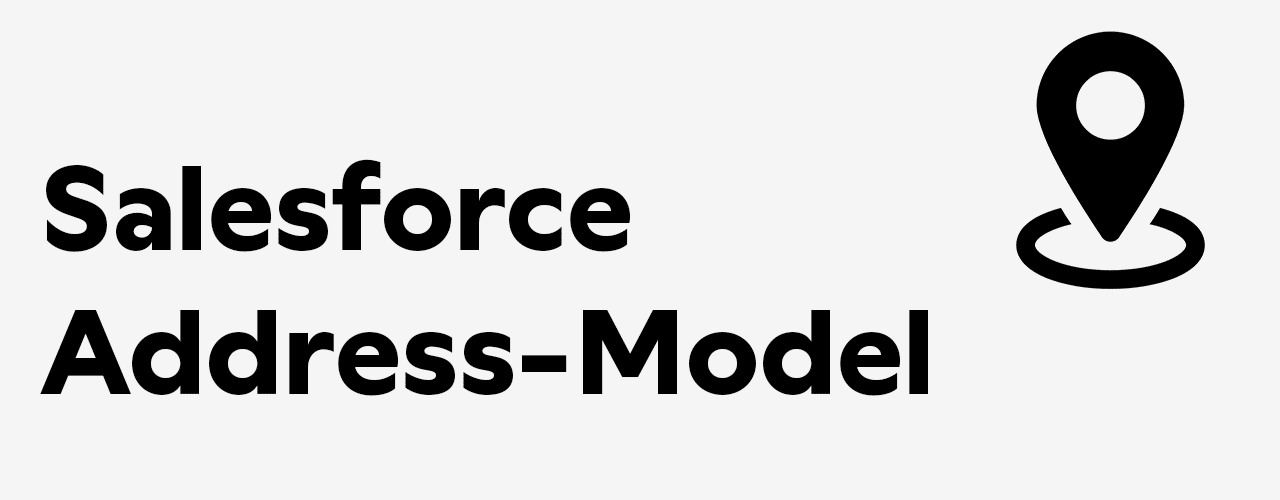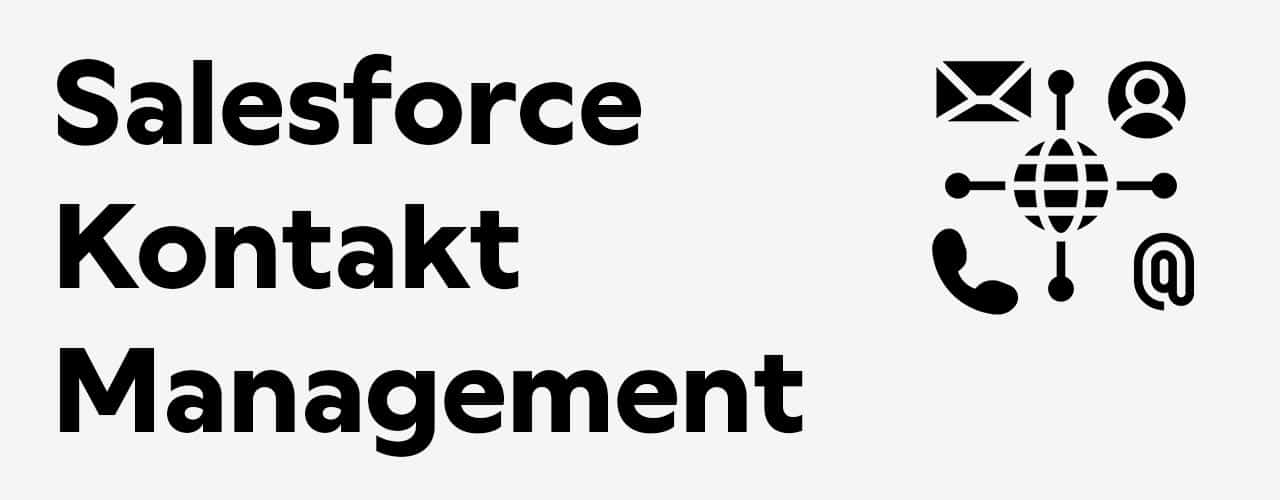In every CRM we manage contacts. These contacts are people with whom we have a relationship. However, we often record little information such as the email address, phone number, postal address, or function. But this is far from enough for successful contact management!
For each account, we need to capture and maintain the associated contacts. An account is usually a company, e.g. a customer, supplier, or partner (see the squiis blog post Salesforce Accounts).
So contacts are people who work at that company, and we capture the available information, often based on their business card or an email we received (coordinates). This is the first step, but it is mandatory to have an extended information collection, at least over time.
To which campaigns do I add the contact? In which language do we communicate with the contact? In which team, which department does the contact work? Do we have information on how the contact communicates via social media? Do we know the date of birth, further interests?
Contact owner
Salesforce (and many other CRM’s) control various processes via the ownership of the records. So every account and every contact has a CRM user as owner. This needs to be actively managed. The owner should have the most promising influence and relationship with this contact, and e.g. be the sender for campaigns.
Link contact with multiple accounts
While you can connect accounts to each other with so-called partner roles, Salesforce also allows you to connect contacts to multiple accounts. Because today, someone can not only be employed by more than one company but also be active in a specific role for another account, such as a board member, etc. We want to map this in our CRM.
Contacts can also be linked via contact roles in opportunities. This is highly relevant, as it shows which people need to be intensively involved in order to land a new deal, for example.
Processes
However, contacts must not simply be maintained on an ad hoc basis. It is a matter of active contact management, documentation, and training. Thus, activities (meetings, e-mails, telephones, …) are necessarily recorded in the CRM. This allows, for example, to regularly check via a report who has never had contact via these channels (or thus per channel) to their contacts for more than x days.
The Salesforce Mobile App is also used here. In addition to much more, it offers the option of calling contacts directly from the app and recording the activity immediately after the call.
Contact management KPI’s
Alternatively, contact management (and account management) KPI’s can also be stored in Salesforce, i.e. a kind of budget that must be achieved. For example, it can be defined that at least x touchpoints per period are necessary for the contacts. These can be meetings, calls, event participation, etc. Via the reporting system, it is also possible to constantly see where each individual account/contact stands in relation to the objective.
«John Doe does not work here anymore»
Ideally, one has such a close connection to contacts that one is not surprised by such a statement. But if an email is suddenly undeliverable, it is important to “follow up” on the lost contact. After all, you once entered this person in your CRM for some reason, and it’s a negative thing to simply “lose” someone. So you need to find out where the new contact now works so that you can adjust the data accordingly.
Overwrite or recapture? This is where I’ve always had detailed discussions. Is the existing contact set to inactive and kept that way in favor of the old information, or is the contact overwritten with the new information and attached to the new account?
Personally, I think that the contact should be inactive only as long as the new information is not known. So the goal should be to have very few (or none) inactive contacts in CRM. As soon as it is clear where the contact is newly working, it will be updated. Through field history tracking, it is always visible where the account originated (i.e. worked before), moreover, the activity – and campaign history remains visible. An alternative is to create a contact role to the old account, e.g. “has worked at”.
Fictitious contacts
Again and again, there are situations where we have accounts but do not (yet) know any contacts. Nevertheless, we already want to enter into communication with these accounts, e.g. via an info@ e-mail address. In this case, I advise creating fictitious contacts, e.g. with the name “Info Contact” with the corresponding e-mail address. This way an active communication can already take place.
Google Maps Integration
There are many other functions related to contacts, such as Google Maps integration. If I still have an hour to spare after a presentation to a potential customer, then it’s best to take a quick look to see who has an office nearby. Spontaneous coffee visits have often led to lasting business relationships.
Employee data
Salesforce, by the way, is also excellent for managing employee data. The granular data access system allows that a wide variety of information can be maintained for employees, e.g. in order to make some of it available to their superiors.
Contact management is an extremely important topic. Not particularly complex in itself, it nevertheless involves one or two challenges that need attention.
Contact management
Relationships with people are incredibly important, but we often reduce this to capturing far too little information and processes. That’s a shame, and we miss out on a lot of opportunities in the process. Because well-maintained and conceptually prepared contact management offers a lot of potential that should not be left unused.
André Ryf is Salesforce consultant, trainer and coach, and owner of squiis, your personal Salesforce Partner.
If you have any questions about Salesforce, please contact us. We are there for you in Zurich, Basel, Bern, St. Gallen and all other cities in Switzerland
Not yet a newsletter subscriber? Then register right here.




